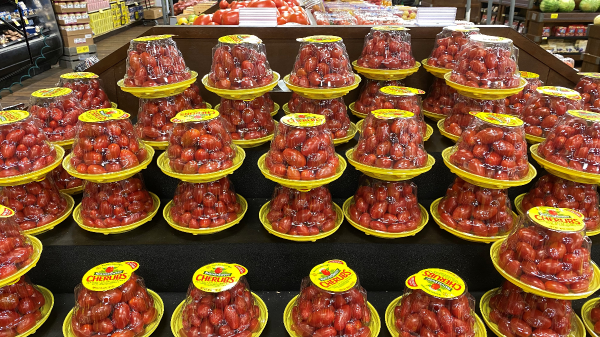As a produce industry observer, I’m always on the lookout for innovation.
And, as the North American fresh produce industry prepares to gather for its largest conference and trade show since 2019, all eyes are on the International Fresh Produce Association’s BB #:378962 Global Produce and Floral Show in Orlando next month.
Let’s take a look back at several of the most influential ideas, the gamechangers as we’ll call them, that revolutionized the way we do business, and how these disruptors evolved into the innovations we see and enjoy today.
The Big Idea: Tomatoes with Flavor
How it changed the game: Tomatoes in the produce department in the late 1980s and 1990s were a little green in the gills. “Gas green,” to be exact.
Roma, or salad tomatoes, were making inroads, as were tomatoes-on-the-vine. But a net bag with a yellow header, along with big ideas in marketing, propelled specialty tomatoes to unheard-of significance and success.
Here’s the way Amit Patel, marketing director of innovation for San Antonio-based NatureSweet, Ltd. BB #:152351, puts it: “NatureSweet changed the category by offering the best flavor, consistent quality, and a constant price year around, which wasn’t found in tomatoes, or many other categories.”
Patel says the grower-shipper was “able to do this while also developing a business practice that put its people first and unleashed their potential. Today this translates to the number-one selling snacking tomato in the country with Cherubs, from an EFI [Equitable Food Initiative]- and Fair Trade-certified company.”
The marketing differentiator
Melinda Goodman of FullTilt Marketing, LLC, BB #:354985 says the rise of NatureSweet is an interesting case study in the category. “There was a consumer need,” she recalls.
“Tomatoes tasted bad—they didn’t taste like a garden-grown tomato—people had stopped buying them,” she observes.
But NatureSweet brought all new thinking to the category, in terms of both branding and marketing. Once there was an alternative, a new path as Goodman calls it, retailers and consumers alike were willing to try the new tomatoes.
Patel explains NatureSweet’s thinking: “The idea was, that similar to center store, we would develop the best-tasting and highest-quality product, so consumers didn’t have to poke, smell, or squeeze our tomatoes to make sure they were good. We delivered on that promise.”
Goodman mentions NatureSweet’s approach as well, citing the influence of a strong CPG (consumer product goods) background and in seeking what she calls “a different type of marketing.” She says NatureSweet was spending 10 percent of its budget on marketing, which was unprecedented at the time.
“NatureSweet was doing radio, television, in-market billboards—everything,” she remembers. And when the company ditched its familiar net bag and adopted a new tomato variety, NatureSweet turned to a unique package to set itself and its tomatoes apart.
It worked and NatureSweet isn’t done yet, according to Patel. “We continue to expand our portfolio into new flavors, colors, shapes, and sizes to ensure that we have variety and meet all the needs and uses of small tomatoes.”
And when you look at today’s tomato category, the changes are significant. From intensely sweet to rich umami, tomatoes do indeed come with many flavor profiles and in practically every color, from deep black to brilliant yellow.
This is an excerpt from the cover story in the September/October 2022 issue of Produce Blueprints Magazine. Click here to read the whole issue.



